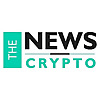ARTICLE AD BOX

- Ethereum Layer 2 scaling solution, zkSync, unveils a ZK token airdrop scheduled for next week.
- Also, zkSync unveils ZK Nation, empowering community-driven protocol development.
As 2024 continues to see positive developments in the crypto space, zkSync, a prominent Ethereum Layer 2 scaler by Matter Labs, has made a significant announcement—plans to airdrop nearly 3.68 billion ZK tokens next week.
According to the distribution plan, 89% of the airdrop will be allocated to zkSync users who have met a certain activity threshold. The remaining 11% will be allotted to contributors, including native projects, on-chain communities, and builders.
Community-Driven Protocol Development
The zkSync airdrop announcement coincides with the introduction of “ZK Nation,” a new governance framework. That is designed to empower the community in guiding zkSync’s development.
This framework includes three main bodies: the Token Assembly, the Security Council, and the Guardians. That set to manage governance, security, and overall protocol growth through interaction with zkSync’s smart contracts and coordination platforms like Tally.
However, the zkSync pre-market valuations from Aevo and PancakeSwap indicate that the ZK token holds a value between $0.66 and $0.71. Expecting a market cap of approximately $14.91 billion and a fully diluted value surpassing $2.5 billion. This valuation nearly triples zkSync Era’s current total value locked (TVL) of $815 million.
Additionally, zkSync completed a rollout of its latest software upgrade, v24, on the mainnet on June 7. This update aims to enhance the security and functionality of the Ethereum Layer 2 scaling solution, marking a significant milestone for the protocol.
With these developments, zkSync continues to grab huge attention in the market. Further, it may position itself as a pivotal player in the Ethereum scaling and privacy landscape.
.png)
 7 months ago
5
7 months ago
5








 English (US)
English (US)